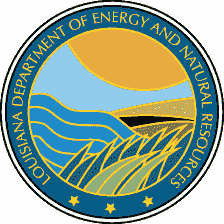Top Stories
Office of Conservation, DEQ Announce Results of EPA Aerial Survey of Bayou Corne Area
EPA analysis finds no evidence of detectable concentrations of natural gas or elevated radiation levels near sinkhole
Louisiana Commissioner of Conservation James Welsh and Louisiana Department of Environmental Quality (DEQ) Secretary Peggy Hatch today announced that the U.S. Environmental Protection Agency (EPA) has returned a report on last week’s aerial survey of the Bayou Corne area, with findings indicating no detectable concentrations of natural gas or other chemicals in the atmosphere and no elevated radiation levels related to cavern operations.
The EPA, at the request of the Office of Conservation and DEQ, deployed to the Bayou Corne area its Airborne Spectrophotometric Environmental Collection Technology (ASPECT) airplane, equipped to detect natural gas, processed chemicals and radioactive sources in the atmosphere or on the surface of land or water.
“Though DEQ has maintained an ongoing program of air and water quality monitoring in the area since the initial reports of natural gas bubbling around Bayou Corne in early June, we joined with the Office of Conservation asking that the EPA deploy its state-of-the-art ASPECT plane to add an extra layer of observation and monitoring to ensure we are doing everything possible to protect public safety,” Hatch said.
The ASPECT plane was used to conduct the survey on Aug. 25, making 17 passes over the Bayou Corne area and nearby Napoleonville Salt Dome to detect and quantify any significant levels of natural gas, chemical or radiological releases to the atmosphere from the sinkhole, from other salt dome operations or from nearby land and waters.
“We are appreciative of the EPA’s assistance in our combined effort to use the best science and equipment available to determine exactly what is happening at the surface and how it may or may not be impacting the community, as we also work to get a clear picture of what the below-ground causes for these events may be,” Welsh said.
According to the EPA report on the findings of that survey, the ASPECT equipment did not detect concentrations of methane (natural gas) or other petrochemical releases anywhere in the survey area, including no chemical signatures or plumes emitted from the sinkhole. Any concentration of those substances great enough to present a hazard to public safety would have been detectable to the ASPECT survey. Additionally, the survey found no indication of elevated radiation levels linked to or near cavern operations, and that all portions of the survey area were within normal radiation levels.
The ASPECT flight did pick up the diesel sheen that remains on the surface of the slurry area, likely accounting for reports from the area of a continued diesel odor, but showed no detectable emissions from the area in concentrations great enough to represent a public hazard. As DEQ has noted in past reports, while natural gas is bubbling from Bayou Corne, Grand Bayou and the slurry area, it is mostly composed of methane and is not toxic. The amount of methane emitted has been measured by laboratory analyses as very slight and diffuses so quickly that it is difficult to capture with visible spectra, such as the infrared technology used by the ASPECT plane. Not only is natural gas not toxic, but the amount being emitted is so small that the situation could not possibly cause health concerns from air pollution.
Click this link - to see the EPA report on the survey.
News Archives »
